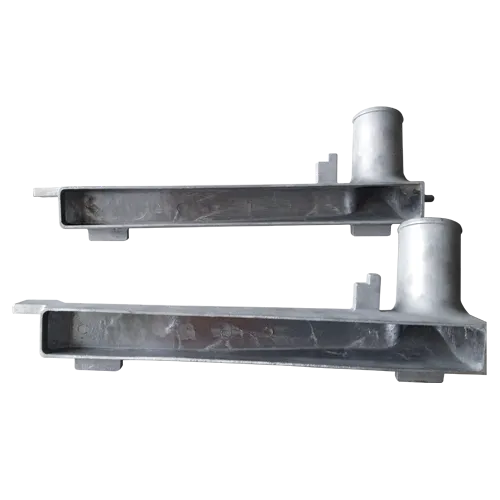Mobile:+86-311-808-126-83
Email:info@ydcastings.com
engine sump pan
Understanding Engine Sump Pans Essential Components for Motor Functionality
The engine sump pan, commonly known as the oil pan, is a critical component in an internal combustion engine's design. It plays several vital roles in the engine's overall functionality, performance, and longevity. Understanding what the engine sump pan is, its functions, and its construction can provide valuable insights into how engines operate and the importance of maintenance practices.
What is an Engine Sump Pan?
The engine sump pan is located at the bottom of the engine block. It serves as a reservoir for engine oil, collecting oil that drains down from the engine components. The design of the sump pan varies across different vehicle models and may be made from various materials, including stamped steel, aluminum, or plastic composites. Each material has its advantages in terms of weight, cost, and thermal conductivity.
Functions of the Engine Sump Pan
1. Oil Reservoir The most fundamental function of the sump pan is to store the engine oil necessary for lubrication. When the engine operates, oil is circulated through various engine parts to reduce friction and wear. After being pumped out, the oil returns to the sump, where it collects and cools.
2. Heat Dissipation The sump pan also aids in dissipating heat away from the engine oil. During operation, engine oil absorbs heat from the engine components. The larger surface area of the sump pan enables better heat dissipation, helping to maintain optimal oil temperatures for effective lubrication.
3. Oil Filtration Many sump pans are designed with integrated oil filters or strainer elements. These components help catch unwanted debris and contaminants present in the oil, preventing them from recirculating through the engine. A clean oil supply is crucial for engine longevity and efficiency.
engine sump pan

4. Sealing and Containment The sump pan is sealed to prevent oil leaks and contamination from external elements. gaskets are used to create a tight seal between the pan and the engine block.
5. Access for Maintenance The sump pan typically features a drain plug that allows for easy oil changes. Regular oil changes are crucial for maintaining engine health, and the design of the sump facilitates this essential maintenance task.
Common Issues and Maintenance
Although the sump pan is a robust component, it can experience wear and tear over time. Issues may arise from corrosion, impact damage, or gasket failure, which can lead to oil leaks. Regular inspection of the sump pan is advisable, as any signs of oil deposits or external oil puddles could indicate a problem.
Additionally, it is crucial to check the engine oil level regularly and to change the oil as recommended by the manufacturer. Neglecting oil maintenance can lead to engine overheating, excessive wear, and ultimately, engine failure.
Conclusion
The engine sump pan may seem like a simple component, but its importance in engine operation cannot be overstated. It functions not only as a reservoir for oil but also plays a crucial role in oil management, cooling, and contamination prevention. Understanding its functions allows vehicle owners to appreciate the complexities of engine design and underscores the need for regular maintenance. By keeping an eye on the sump pan’s condition, drivers can help ensure the longevity and efficiency of their engines, promoting smoother operation and better performance on the road.
-
Why Should You Invest in Superior Pump Castings for Your Equipment?NewsJun.09,2025
-
Unlock Performance Potential with Stainless Impellers and Aluminum End CapsNewsJun.09,2025
-
Revolutionize Your Machinery with Superior Cast Iron and Aluminum ComponentsNewsJun.09,2025
-
Revolutionize Fluid Dynamics with Premium Pump ComponentsNewsJun.09,2025
-
Optimizing Industrial Systems with Essential Valve ComponentsNewsJun.09,2025
-
Elevate Grid Efficiency with High-Precision Power CastingsNewsJun.09,2025











